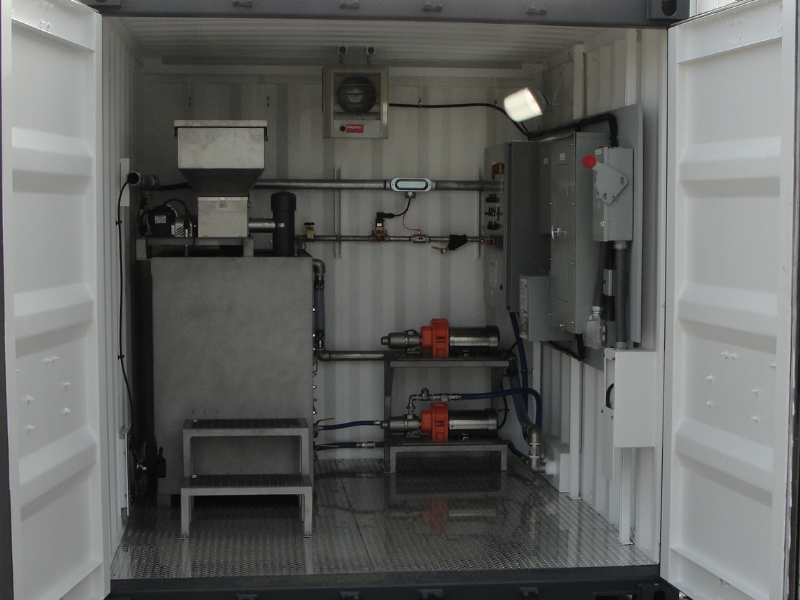Compact and containerized dry polymer system provides mobility and modularity for centrifuge dewatering integration.
Bradshaw Construction Corporation is a utility tunneling contractor that manages projects across the USA. The company specializes in microtunneling, which uses state-of-the-art remote-controlled pipe jacking and is considered “Digital Age Tunneling.” A single person above ground operates the microtunneling system, using a computer to advance and steer the microtunnel boring machine, jack the pipe, and excavate the soil. Microtunneling accounts for about 90% of Bradshaw’s business.
Company: Bradshaw Construction Corporation
Location: Multiple
Challenge: Turnkey and containerized polymer system for design integration with a centrifuge decanter. Entire system must be modular and mobile for different job sites.
Treatment: Flocculation for mechanical separation by centrifuge.
Capacity: 0-7 GPM of polymer solution required
Unit Type: Custom M100SS
Results: Clarified effluent for reuse or discharge. Dewatered solids for disposal or reclamation
Benefits: Efficient polymer make-down to minimize consumption and costs. Modular design. Integration support. Rapid after-sales support and spare parts.
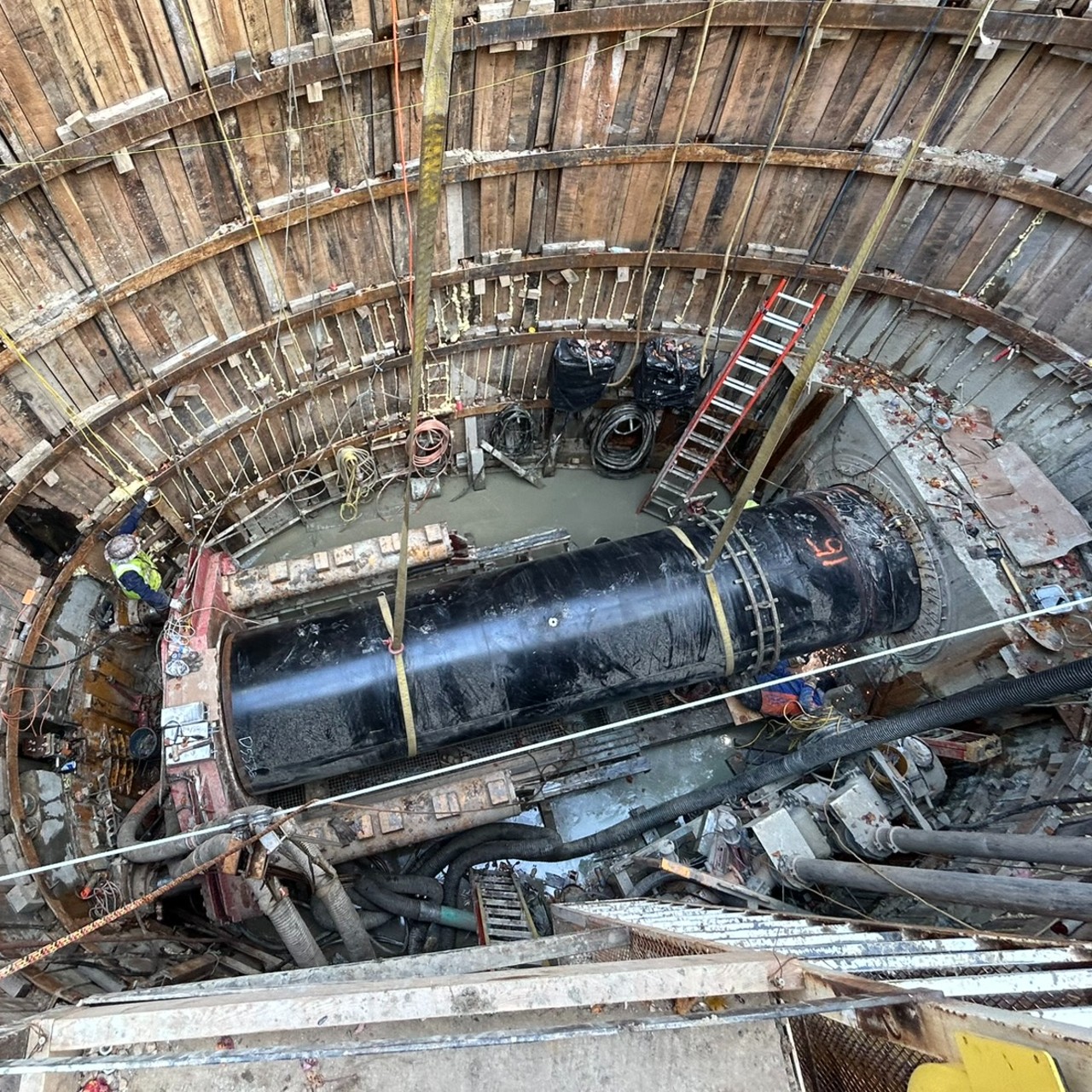
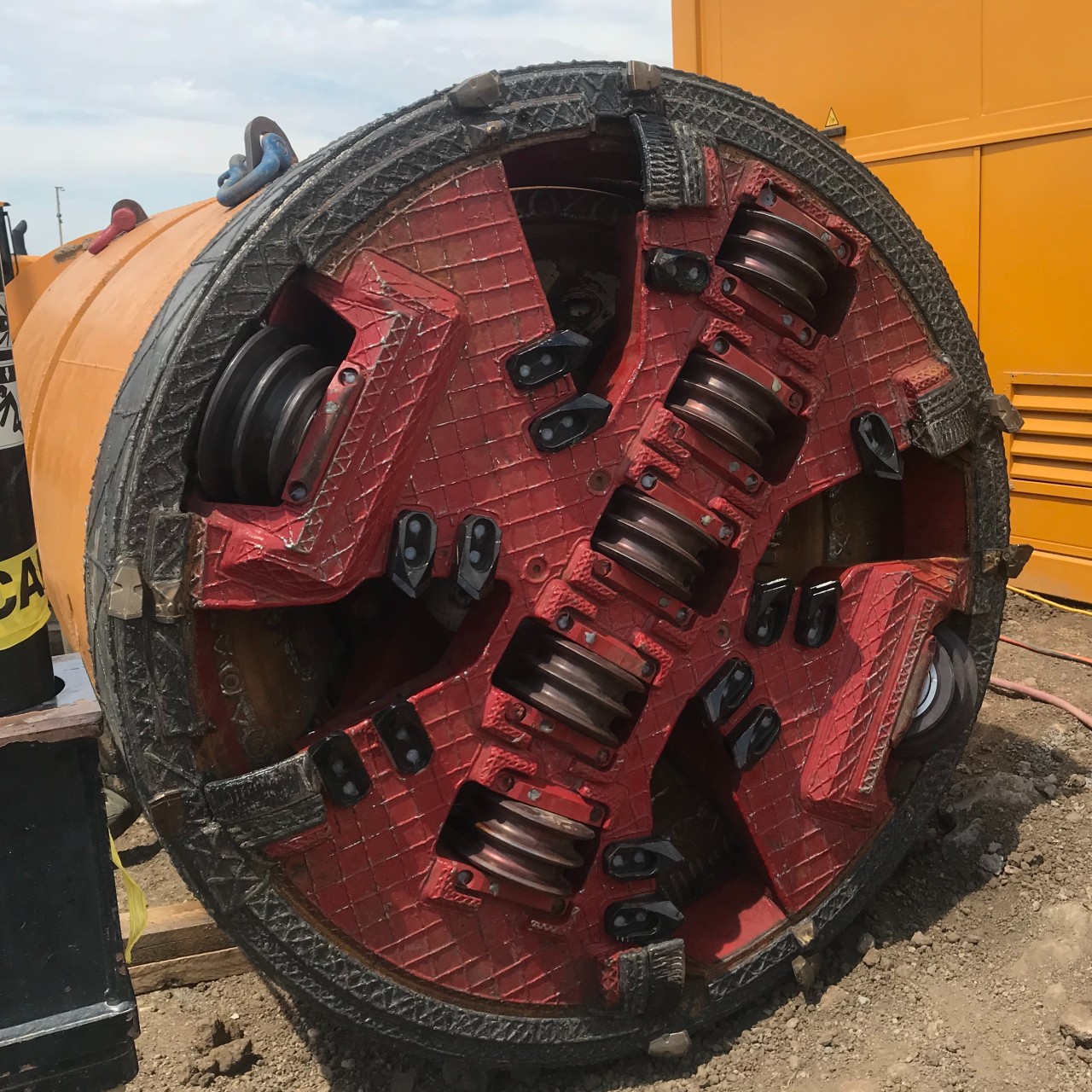
A water-based slurry conveys the micro tunneling system, similar to how a petroleum company drills down vertically for oil or gas extraction. “We must separate the ultimate liquid and the excavated material from the drilling fluid,” explains Bradshaw Construction Corporation’s Equipment Manager Ben Truschel.
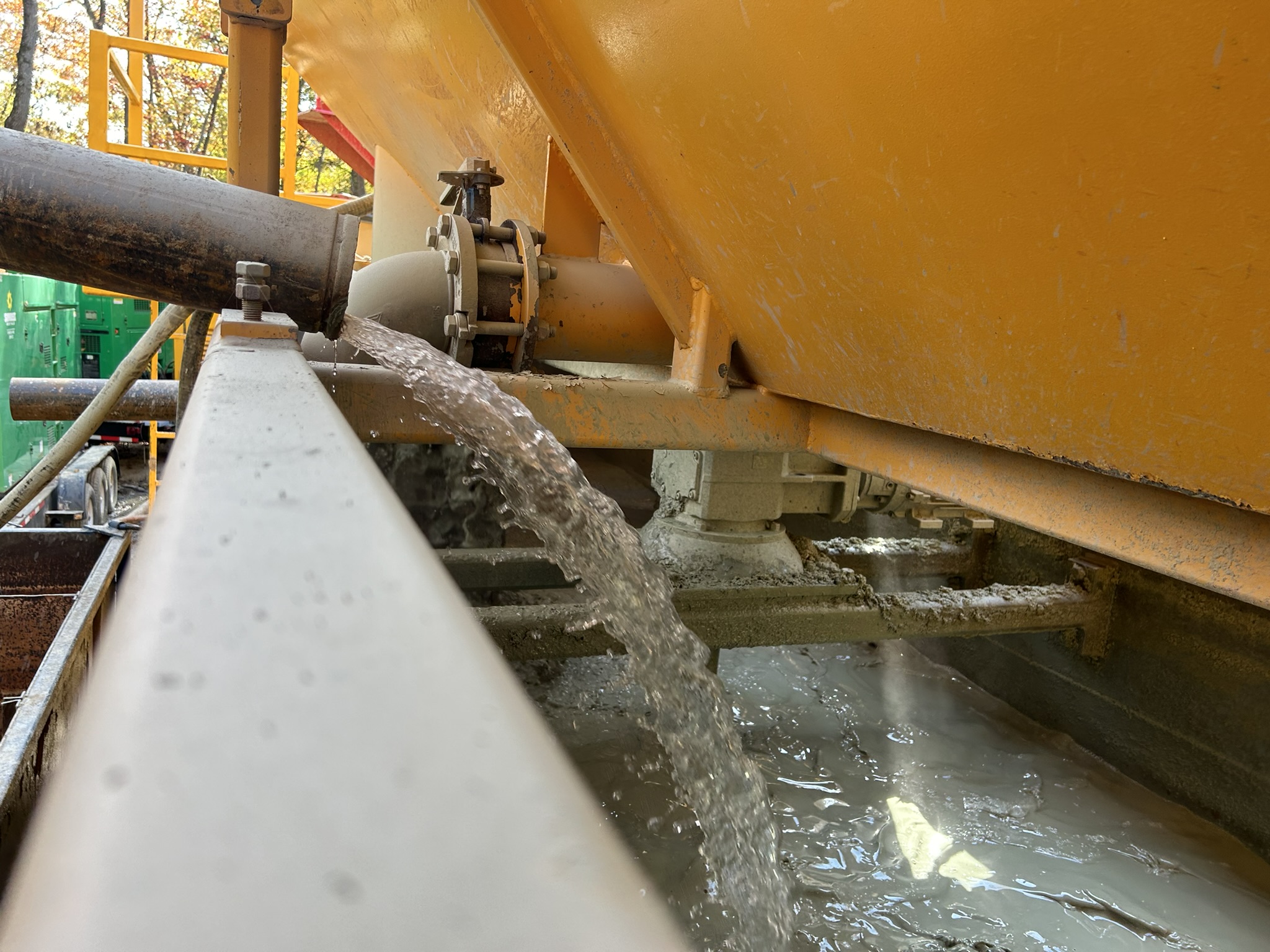
“In the mining or aggregate industry, their product is the aggregate—the solid. The material is mined, and then a lot of times it must be cleaned, which uses water. The water gets dirty, and then you need to clean the water, usually for discharge or environmental reasons. In our world, it’s the opposite. The slurry is the product. We’re just trying to get the ground out of the way so we can get our tunnel in. The challenge for us is that the ground is typically not uniform. It could be sand, silt, clay, hard rock, weak rock, and everything in between.”
Due to the process and the importance of the drilling fluid, Bradshaw must separate the solids from the liquid. “Our product is really the slurry,” he says. “It’s the drilling fluid. We want to condition the drilling fluid best for the tunneling excavation process.”
Challenge
Bradshaw established a coarse separation process. “When we mine, the spoil latent slurry enters a separation plant first, which has a primary scalping deck that removes all the large aggregate,” Truschel says. “What’s left is sand, silts, and clays. After the first scalping deck, the material is usually picked up using a centrifugal slurry pump to pump through a series of hydrocyclones onto a desanding deck. That is a second layer—the second deck is designed to remove all the sand.”
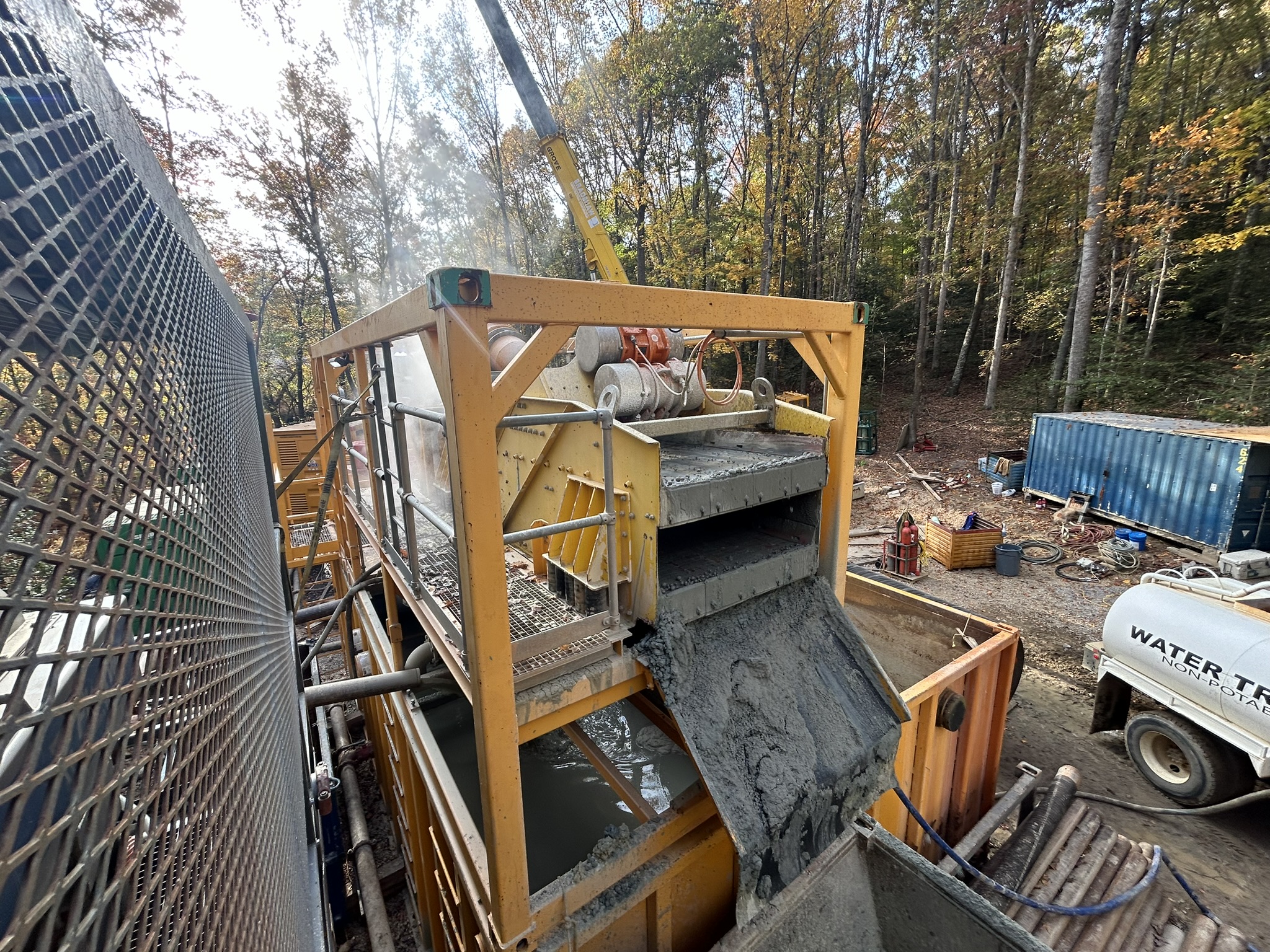
The remaining solids and colloidal material are silts and clays that are 74 microns or less. Removing this material requires chemical conditioning with a polymer flocculant and mechanical separation with a centrifuge. Because Bradshaw Construction manages microtunneling jobs across the USA, the combined polymer unit and centrifuge system had to be modular and mobile. The equipment must be compact, durable, and designed to run in varying climates and weather conditions.
Solution
In early 2021, Ben contacted Clearwater and described his challenge. Clearwater’s lab technicians performed jar testing to confirm the polymer flocculant dosing rates, allowing the engineering team to confirm the dry polymer make-down system specifications. Our team worked closely with Ben and his centrifuge supplier, Flottweg, to outline a custom dry polymer make-down system installed in a 15ft high-cube shipping container.
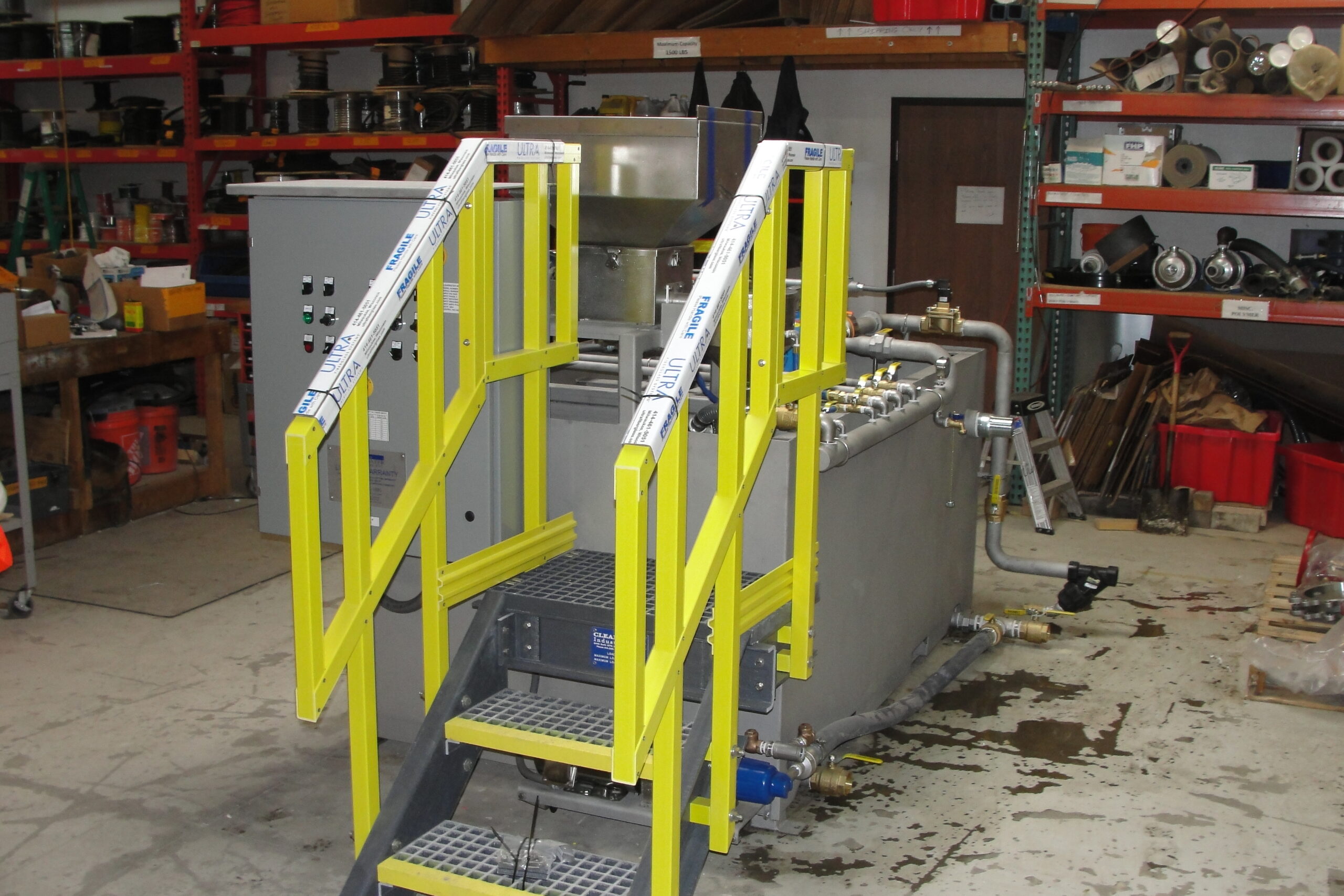
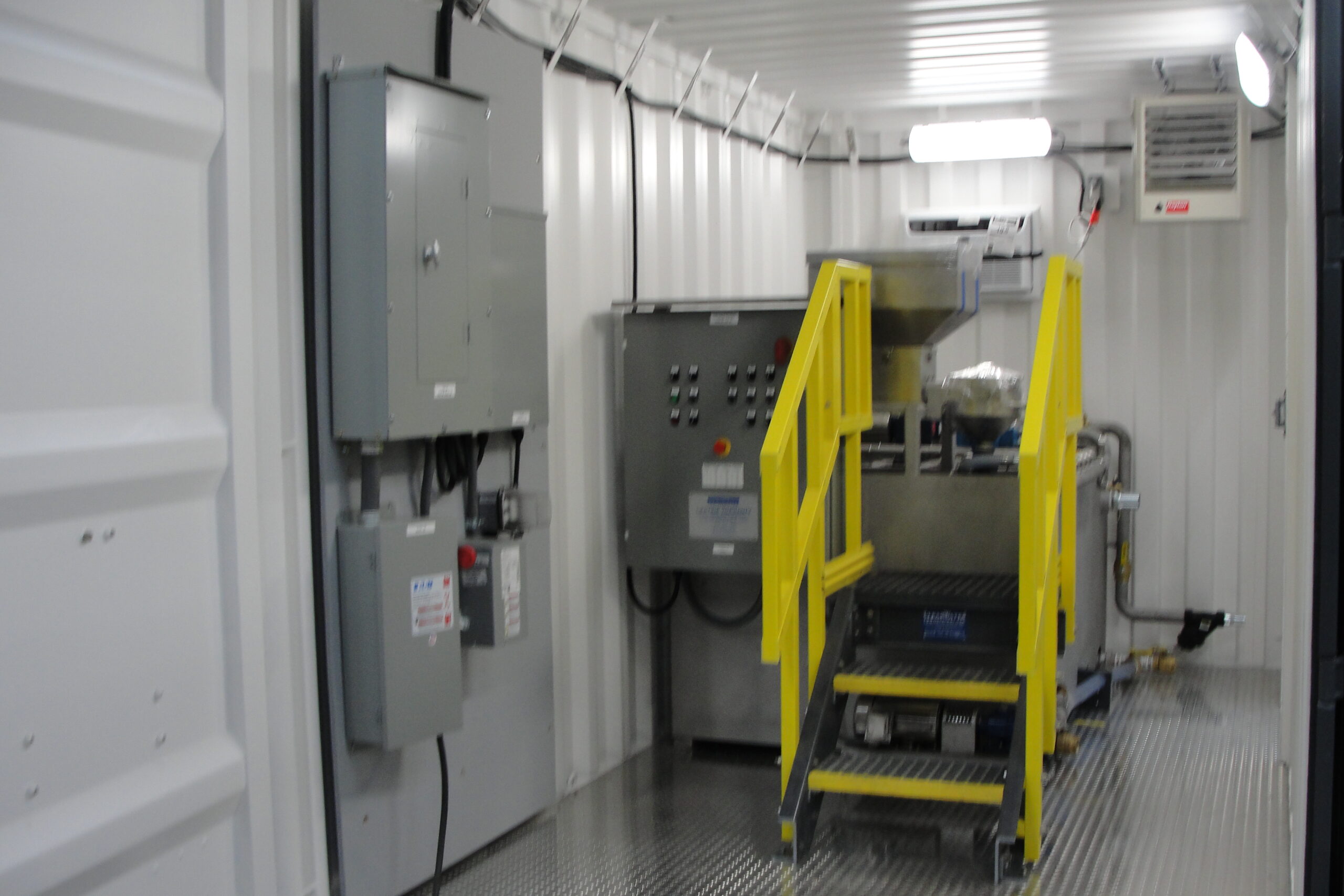
By modifying Clearwater’s M100SS Dry Polymer Make-Down System, we were able to install the unit in a 15ft container while ensuring it has the capacity to meet different application requirements. The containerized system has a single-point electrical hook-up with step-down voltages that allow for LED lighting, HVAC climate control, and operator mobility. Bradshaw can easily transport the containerized system from one job to the next.
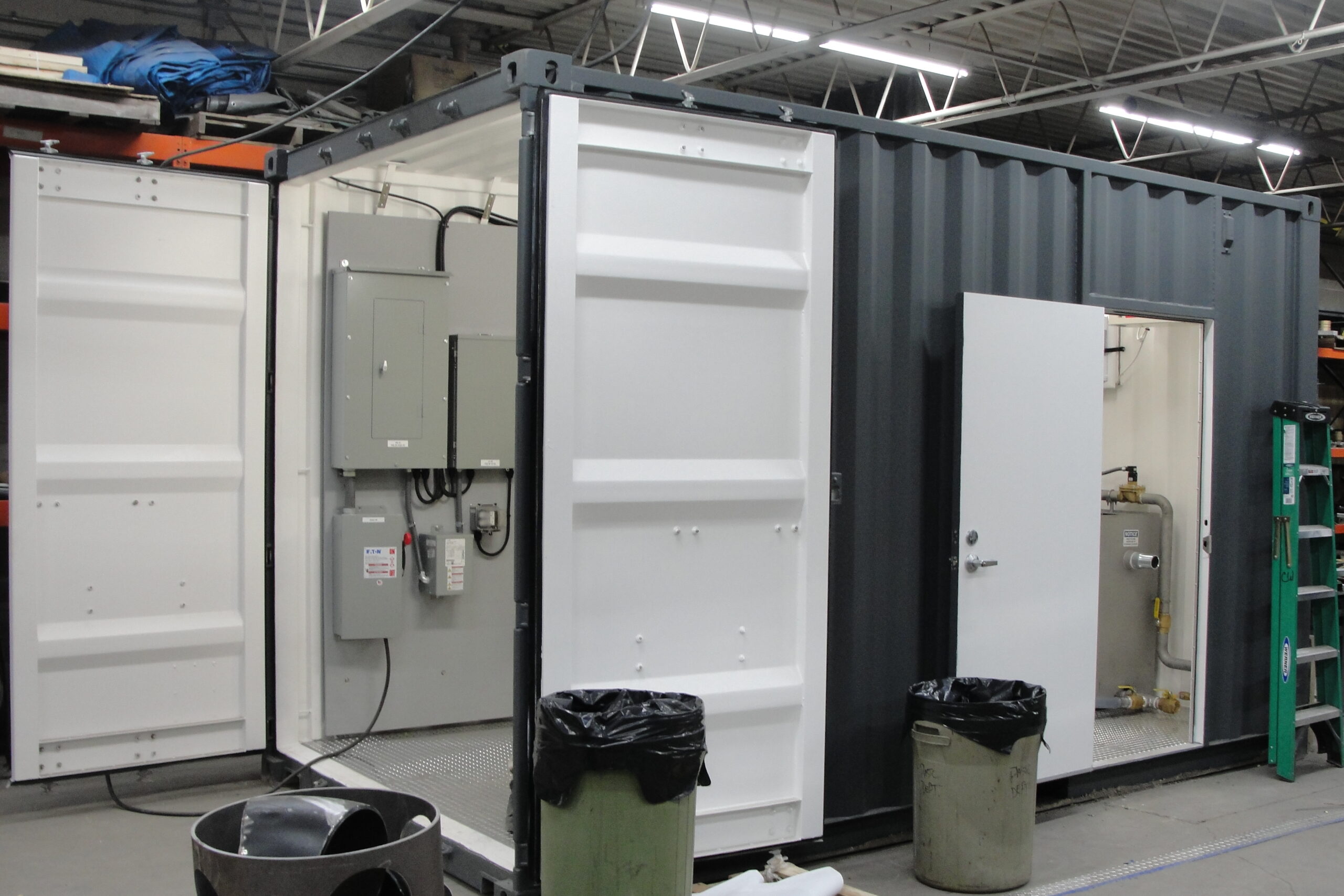
Plus, the design allows Bradshaw to integrate and install Flottweg’s centrifuge on top of the container. This modular design reduces the footprint and uses gravity to discharge the dewatered solids and centrate.
“We married the two companies’ equipment into a modular package,” he says. “I believe that was probably the first time it’s been done. Marrying technologies from two highly specialized companies like Flottweg and Clearwater made perfect sense for our microtunneling civil construction projects, which is our core competency.”

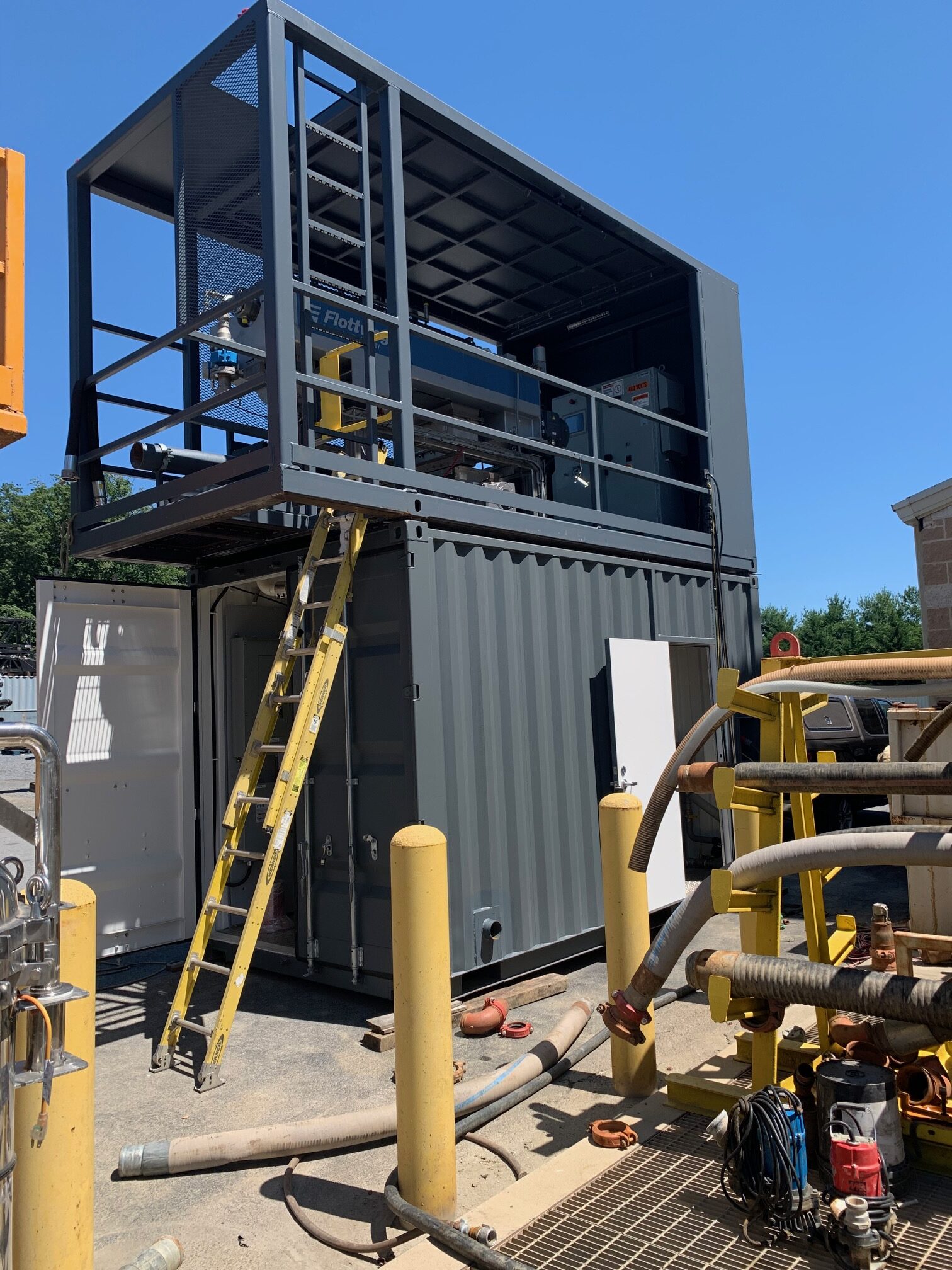
Results
“Measuring the results is the name of the game on a civil construction jobsite,” Truschel says. “If you walk onto a job and look at the effluent coming out of the discharge of the centrifuge, and the water is crystal clear, then you can’t do any better than that,” he explains.
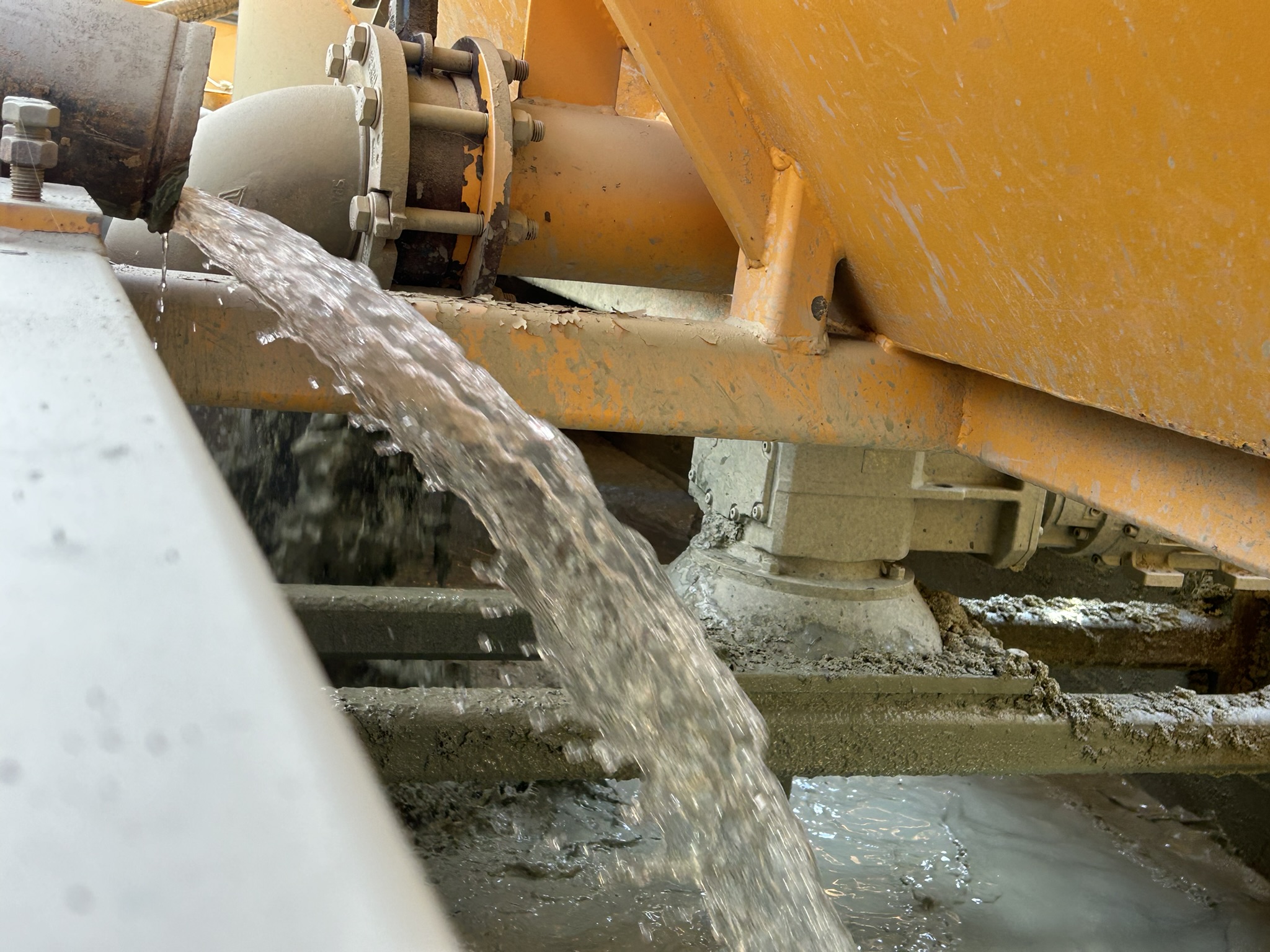
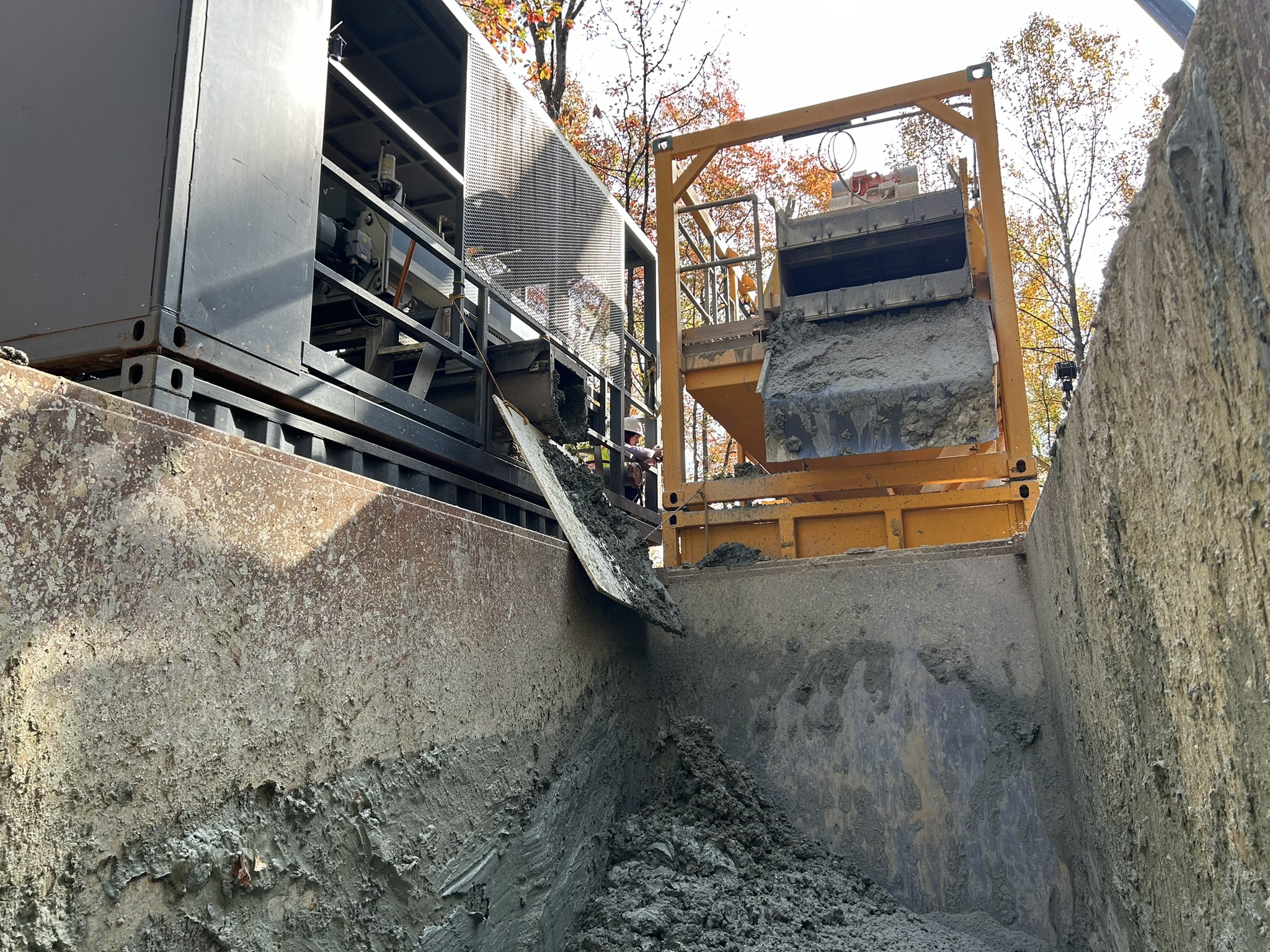
Truschel said there are obvious advantages to the system he has created.
- High-quality machinery that produces clear effluent with minimal downtime. “These are mobile units, so they move around a lot. It’s really hard to get an idea of how many hours of run time versus downtime, but I would say it’s probably less than 1% downtime compared to the actual operating hours,” Truschel says. “If you ran 100 hours straight, you’re going to have less than an hour of downtime.”
- Support in terms of parts availability and customer service.
- Customization. “A lot of other suppliers provide a centrifuge and an operator panel, and it’s up to you to figure out the rest,” Truschel says. “Flottweg and Clearwater have really been helpful in terms of being able to build customized equipment for us, which also provides flexibility.”
- Performance. “The main thing is that the equipment must perform,” he says. “You want to take the solids out of the liquid. We must be assured that we can remove enough solids to create a clear effluent.”
“At the end of the project, when the tunnel’s completed, we have all this drilling fluid. We can’t just dump it on the ground,” Truschel says. “With a good quality centrifuge from Flottweg and a good quality floculation unit from ClearWater, we can remove 99% of the solids out of the drilling fluid. Maybe you can discharge it into a filter system and then, literally, just discharge it right back to a storm drain.” Removing disposal costs is another benefit.
Contact Clearwater Industries today at (414) 365-1200 or our through our contact form to learn how we can help reduce your polymer consumption and ensure long-lasting, reliable polymer preparation for your unique operations.
Other Systems Manufactured for Bradshaw Construction
M500SS Dry Polymer Make-Down System in 20ft High-Cube Container
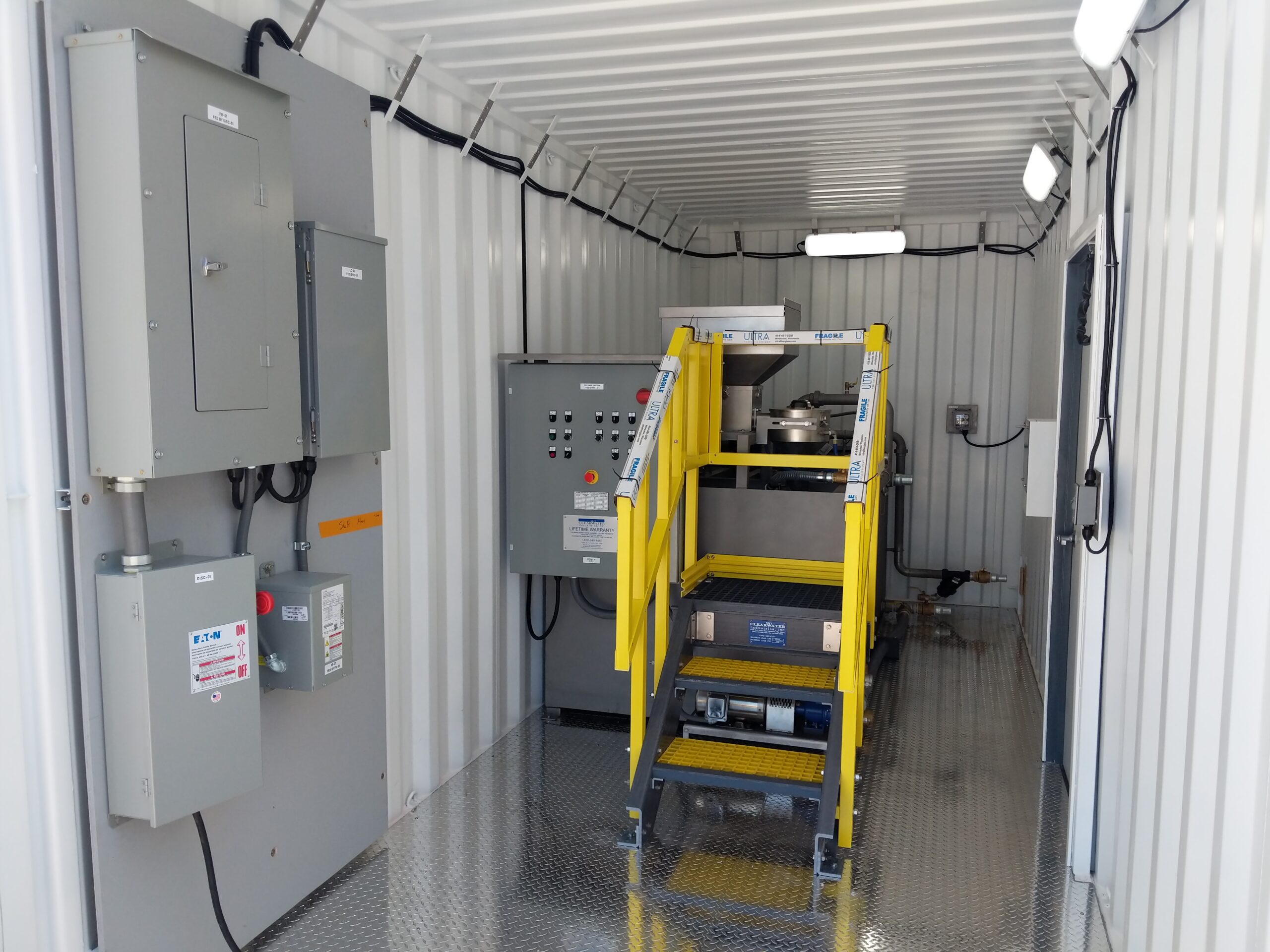
(2) M250SS Dry Aluminum Sulfate Make-Down System in 10ft High-Cube Container
